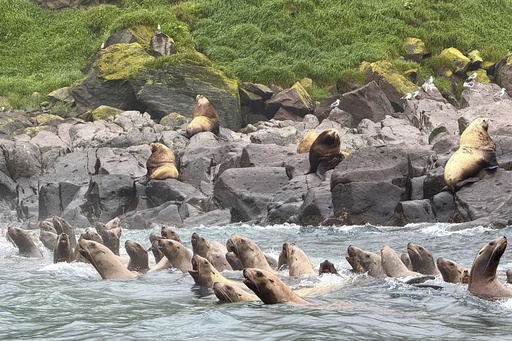MOSCOW — A significant earthquake, registering a magnitude of 8.8, rocked the region off Russia’s Far East Wednesday, leading to a small-scale tsunami that inundated a fishing port. Despite the waves and a few power outages, regional authorities were well-prepared, successfully minimizing damage and avoiding major casualties, with only a few injuries reported.
Local governments quickly declared a state of emergency to safeguard inhabitants, ensuring swift actions to mitigate potential risks. Though the disaster could have been catastrophic, officials confirmed that overall impact was remarkably restrained.
**Kamchatka Peninsula**
The Kamchatka Peninsula, a striking landscape featuring fiery volcanoes and icy terrains, is historically one of the globe’s most active volcanic regions. It hosts around 300 volcanoes, 29 of which remain active according to NASA’s Earth Observatory. Earthquakes and tsunamis are familiar occurrences here, as it sits near a tectonic boundary in the Pacific Ocean.
Stretching 1,200 kilometers (750 miles) away from Moscow, the peninsula accommodates roughly 290,000 inhabitants, concentrated mostly in the southeastern capital, Petropavlovsk-Kamchatsky. The region’s economy relies primarily on fishing due to its remote geography, where transportation is largely dependent on helicopters due to limited road infrastructure.
The peninsula’s tallest volcano, Klyuchevskaya Sopka, reaches 4,750 meters (15,584 feet) high and is the largest active volcano in the Northern Hemisphere. It has recently shown volcanic activity with explosions and lava sightings, with the last eruption recorded in 2023.
**Nuclear Submarine Base**
Kamchatka is home to a crucial Russian military installation; a nuclear submarine base located in Vilyuchinsk, along Avacha Bay. The facility houses five advanced Borei-class submarines equipped with nuclear missiles, a critical component of the nation’s defense strategy. The area also contains nuclear-powered attack submarines, among the Russian Navy’s most sophisticated.
Despite the seismic activity, the Russian Defense Ministry has not reported any issues at the Vilyuchinsk base. Military analysts believe Avacha Bay provides natural protection against tsunami waves, and facilities are constructed with earthquake resilience in mind. Retired navy Capt. Vasily Dandykin reassured that the base and submarines are engineered to withstand such shaking.
The media speculates that this base might eventually host cutting-edge submarines armed with Poseidon torpedoes, capable of creating a formidable, potentially radioactive tsunami upon detonation near coastlines—though these assertions about Poseidon’s capabilities remain shrouded in discretion.
**The Kuril Islands**
In proximity, the Kuril Islands span between Kamchatka and Japan’s Hokkaido, consisting of four islands caught in a prolonged territorial dispute with Japan. With a population of approximately 20,000, the region’s economy similarly hinges on the fishing industry.
Over the years, Russia has slowly enhanced its military presence on the islands, refurbishing a Soviet-era airbase and other strategic points. Despite the geological turmoil, they reported readiness for such events, demonstrating their preparedness once the quake struck.
**Impact of the Earthquake and Tsunami**
The earthquake, centered about 120 kilometers (75 miles) from Petropavlovsk-Kamchatsky and at a depth of 21 kilometers (13 miles), triggered multiple aftershocks reaching up to a magnitude of 6.9 according to the U.S. Geological Survey. Its intensity is one of the greatest since the infamous 2011 Japanese earthquake.
Officials on both Kamchatka and the Kuril Islands had braced themselves for such an eventuality, reacting promptly to protect their people. Petropavlovsk-Kamchatsky avoided substantial tsunami effects thanks to Avacha Bay’s shielding geography. Meanwhile, Severo-Kurilsk saw tsunami waves over 3 feet high, submerging part of the fishing port and displacing boats.
Authorities conducted thorough inspections of infrastructure across the regions, revealing minimal damage that negated the need for mass evacuations or significant interventions.


